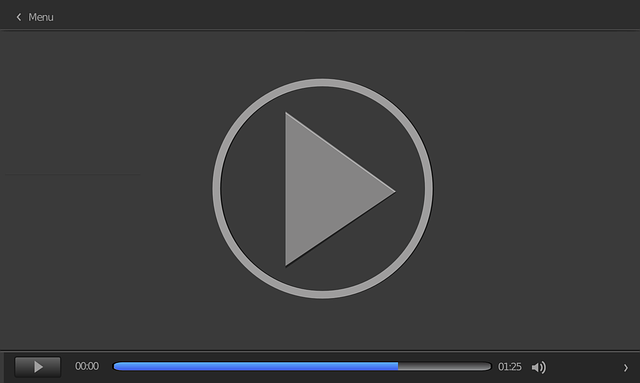Video compression techniques shrink video sizes while preserving quality, with lossless methods retaining all data and lossy methods discarding some for smaller files. DivX Codec is a popular choice known for high-quality encoding and compatibility with Windows Media Player. Balancing file size and quality through bitrate, resolution, and encoding method settings optimizes playback without visual artifacts. Using DivX codec minimizes file size while maintaining video clarity, making it ideal for easy storage and sharing on Windows platforms. This guide teaches how to compress videos using DivX in Windows Media Player, ensuring smooth playback of compressed videos with minimal quality loss.
Looking to compress videos without compromising quality? This comprehensive guide explores efficient video compression techniques, focusing on using the powerful DivX codec within Windows Media Player. We’ll walk you through choosing optimal settings, maintaining visual integrity, and a step-by-step process for successful compression. Learn how to test and optimize your compressed videos, ensuring they play seamlessly on Windows Media Player with How to Play DivX on Windows Media Player techniques covered.
Understanding Video Compression: The Basics

Video compression is a process that reduces the size of video files while minimizing perceived quality loss. It’s similar to how audio compression works, but with visual elements like frames, resolution, and color information. The goal is to create smaller files for easier storage, streaming, and sharing without making the video look blurry or pixelated.
There are two main types: lossless and lossy compression. Lossless methods keep all original data intact, allowing you to decompress the file back to its original state, like playing DivX on Windows Media Player. This is ideal for editing but results in larger file sizes. Lossy compression discards some data, focusing on preserving key details that contribute most to human perception, thereby achieving smaller file sizes. However, it can lead to noticeable quality degradation over very high compression levels.
DivX Codec: A Powerful Option for Windows Media Player

DivX Codec is a powerful and popular choice for video compression, offering high-quality encoding while maintaining file integrity. This makes it an excellent option for Windows Media Player users who want to play videos with minimal loss in quality. The DivX format has evolved over time, providing efficient compression ratios without compromising visual details or audio accuracy.
To take advantage of DivX Codec on your Windows Media Player, you can easily download and install the necessary components. Once installed, simply ensure your video file is saved in a compatible format like DivX or MKV, and Windows Media Player should be able to play it seamlessly. This makes it a convenient choice for users looking to compress and play videos without any hassle, especially when compatibility and quality are top priorities.
Choosing the Right Compression Settings

When compressing videos, choosing the right settings is key to maintaining quality while reducing file size. It’s important to find a balance between compression ratio and visual integrity. Higher bitrates result in better quality but larger files, whereas lower bitrates shrink file sizes significantly but may introduce visible artifacts.
For optimal results, consider adjusting parameters like bitrate, resolution, and encoding method. DivX, for instance, offers versatile settings that cater to different needs, allowing you to play videos smoothly on Windows Media Player without compromising visual fidelity. Experimenting with these settings will help you determine the sweet spot for your specific use case, whether it’s streaming online or sharing via email.
Maintaining Quality During Compression

When compressing videos, it’s crucial to strike a balance between file size and visual quality. While smaller files are convenient for storage and sharing, they can sometimes result in reduced image clarity and increased noise. To maintain integrity during compression, use codecs designed for high-quality encoding like DivX. This technology efficiently reduces video size without significantly compromising the original picture.
For users on Windows platforms, playing DivX videos in Media Player is straightforward. Ensure your player supports DivX codec, then simply open the video file. The advanced compression of DivX ensures that you can enjoy the original video quality, making it a reliable choice for preserving visual integrity even after compression.
Step-by-Step Guide: Compressing Videos with DivX on Windows Media Player

Step-by-Step Guide: Compressing Videos with DivX on Windows Media Player
1. Open Windows Media Player: Launch your Windows Media Player application, then navigate to and select the video file you wish to compress.
2. Select ‘Burn’ or ‘Convert’ Option: Depending on your version of Windows Media Player, choose either the “Burn” or “Convert” option. These options allow you to save the video in a more compact format like DivX.
3. Choose DivX Codec: In the conversion settings, locate the “Codec” selection and choose “DivX” from the available codecs. This step ensures that your video is compressed using the DivX standard.
4. Adjust Quality Settings: Next, tweak the quality settings to balance between file size reduction and video integrity. Higher quality will result in larger file size but better visual fidelity. Lowering the quality setting will compress the video more, making the file size smaller.
5. Select Output Format: Choose an output format suitable for your needs. DivX is a popular choice due to its compatibility with various media players and devices.
6. Start Compression Process: After configuring all settings, click ‘OK’ or ‘Convert’ to initiate the compression process. The video will now be processed and saved in the selected format.
Testing and Optimizing Your Compressed Video

After compressing your video, it’s crucial to test its integrity and playback quality. One effective way to do this is by using a compatible media player that supports DivX format. For Windows users, Media Player is an excellent choice. Simply open the player, click on “File” and then select “Open.” Navigate to your compressed video file and play it. Observe if there are any issues with buffering, stuttering, or visual distortion. If everything plays smoothly and seamlessly, your compression settings have maintained the video’s integrity.
If you encounter any problems, adjust your compression settings accordingly. This might involve altering bitrate, resolution, or other parameters to strike a balance between file size and quality. Remember, the goal is to achieve a smaller file size without sacrificing too much visual fidelity. Testing with DivX on Media Player provides a practical way to gauge the success of your compression efforts for optimal viewing experience.
Video compression is a delicate art, but with the right tools like the DivX Codec, you can significantly reduce file sizes without visible quality loss. By understanding basic compression principles and optimizing settings, you can create DivX-compatible videos that play seamlessly in Windows Media Player. Follow our step-by-step guide and testing tips to master the process and enjoy high-quality, compressed videos without any hassle.
